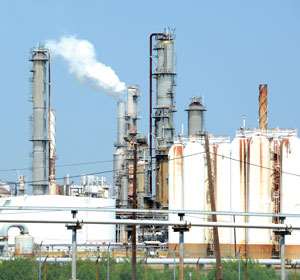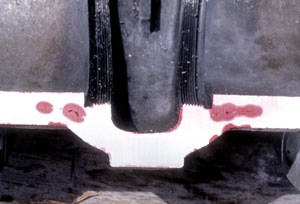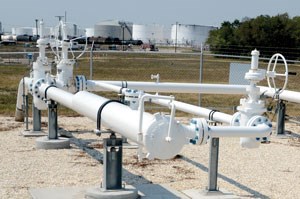If someone used the word “hydrogen” while playing a word association game, the first word that would probably come to mind would be “bomb.”
There’s a good reason: This high-energy gas holds a great deal of danger. Perhaps one of the most graphic demonstrations of its potential was the huge Hindenburg dirigible that exploded into flames over Lakehurst, NJ, May 6, 1937.
Hydrogen is very reactive and highly explosive, as well as being composed of the smallest molecules known to man.
The attributes of this gas that make it dangerous must be kept in mind when considering valves for applications that use hydrogen.
THE CHALLENGES OF ENERGY
With the potential energy that hydrogen possesses, as well as its small molecule size, hydrogen service presents many challenges to the valve designer. For this reason, valves for hydrogen use should be of the best materials, highest quality castings and tightest machining tolerances.
Hydrogen service piping has three basic environments. The first is ambient temperature pipelines that transport pure hydrogen from where it’s manufactured to its ultimate point of consumption. The second, and sometimes the toughest environment, is low-temperature applications in refineries where hydrogen only makes up part of the total chemistry of the fluid in the line. The third is high-temperature hydrogen applications, where hydrogen again is only one part of the fluid line chemistry. From the standpoint of corrosion, the second and third environments are by far the toughest.
Most valve types work well in hydrogen service, as long as they have excellent closure capabilities. This requirement can mean that valve seating surfaces may need additional grinding or lapping to improve sealability. If no high temperatures are involved, elastomeric seats, seals or seating inserts can be employed to help effect a tighter seal. The one type of valve that is least popular in hydrogen service is the swing check valve with its less-than-ideal seating mechanism that does not work effectively for sealing gas, especially hydrogen gas.
CASTINGS REQUIRE EXTRA SCRUTINY
Magnetic particle (MT) examination is used to detect surface and slightly sub-surface casting irregularities. This testing is performed in accordance with various American Society of Mechanical Engineers (ASME) and MSS standards. Because it relies on magnetizing the surface to be examined, MT examinations can only be performed on ferrous alloys.
Dye-penetrant (PT) examination is also performed in accordance with ASME and/or MSS standards. The PT examination is versatile because it can be used on all materials, not just ferrous alloys. PT relies on the bleed-out of a highly visible dye after it has been allowed to set on the casting surface for a prescribed minimum period of time. The size of the ink indications are in relative proportion to the size and depth of the defect.
The most important casting evaluation method is radiography. This can be performed with electrically charged x-ray machines or radioactive isotopes. The radiography technique is performed in accordance with ASME and/or MSS standards. Radiography is considered a volumetric examination because it evaluates the sub-surface mass or volume of the castings. Radiographers use comparative radiographs to evaluate the defects that they see as dark areas on the film. These can be linear or rounded indications. By analyzing the defect and comparing what is visible to the specific graded reference radiograph, potential casting voids or defects can be determined.
The reference radiographs contain varying degrees of defect severity from one to five, with one the best and five the worst. Many end users specify certain maximum severity levels, depending upon the parameters of the application. Some users would routinely accept levels 3-4 for most applications, while severe service applications such as nuclear installations would require virtually zero defect castings.
Hydrogen service acceptance criteria usually lie roughly between standard acceptance criteria (levels 3-4) and the highest quality nuclear applications (level 1). A common acceptance criterion for many defect types in hydrogen service is level 2. This level requires specially manufactured and inspected castings or castings that have been upgraded as required via examination and weld repair.
CORROSION ISSUES IN REFINERY SERVICE
High temperature and pressure are two parameters in refinery processes that call for the utmost scrutiny. When hydrogen is the process fluid, the concern for safety and integrity becomes even greater. High-temperature, high-pressure hydrogen can cause a failure mode known as hydrogen attack, which is when carbon and alloy steels are exposed to hydrogen under these conditions. Hydrogen enters the steel and reacts with the carbon to form methane (CH4). This can result in the formation of cracks and fissures when the operating temperature is above 392°F (200°C).
Another failure mode associated with hydrogen service occurs predominately in low-strength alloys when atomic hydrogen diffuses into internal defects such as voids or laminations, then precipitates as molecular hydrogen. The internal pressure created by this phenomenon is so strong that if it occurs near the metal’s surface, blisters are created.
Yet as damaging as blisters in metal seems, probably the most insidious form of refinery hydrogen damage is called hydrogen embrittlement. This generally occurs at near-ambient temperatures when the hardness of the metal is 22 HRC (Rockwell hardness scale of C) or greater. It can cause a brittle fracture of normally ductile steels under a sustained load and in the presence of hydrogen at levels of less than 100 parts per million.
Because of the hydrogen permeability of steel, it is important that every step be taken to ensure the base material of the valve is of the highest homogeneity. This is why high-quality, near-defect-free castings are desired. It is also why forged materials are highly valued, since their structure is much more compact, dense and free of internal defects.
PROPER WELDING PROCEDURES
In valve manufacturing, welding processes are often employed. If the ultimate service fluid is hydrogen, then special precautions must be taken and procedures followed to ensure sound metal that is not susceptible to any hydrogen damage. It is always good practice to make sure that hydrogen-causing moisture does not enter a weldment, either through the filler material or the welding environment. For example, electrodes should be kept in a heated container until needed so they are dry. Also, the parts to be welded should be free of hydrocarbons such as grease and oil. Welding in a high-humidity environment also can be a source of damaging hydrogen. Proper heat treatment following welding or hot-forming can protect against tramp hydrogen left in the metal. However, it is critical that the weldment and heat-affected-zone is not cooled too fast during the post-weld-heat-treatment process or additional damage could occur.
HYDROGEN PIPELINES
In 2009, ASME developed B16.12, Hydrogen Piping and Pipelines, a standard that covers design, fabrication, inspection and installation. In addition to specifying pipeline requirements, this document also covers the requirements for industrial hydrogen piping. Because transmission pipelines convey pure hydrogen at ambient temperatures, the concerns over hydrogen damage are not as great. However, these pipelines weave around and through populated areas, so extreme care must be taken to ensure integrity. B16.12 is very strict about casting integrity, requiring radiography acceptance criteria of level 2 for most defect types.
All API 6D valves in hydrogen pipeline service are required to be pressure tested with helium in accordance with API 6D, Annex C, Para. C4. Non-6D valves must meet the test criteria of API 598, also with helium as the test medium.
Another concern with valves in hydrogen service is the possibility of stem and gasket leaks. High-temperature hydrogen seals are difficult to achieve and require the highest quality graphitic packing along with exacting tolerances in the stem and stuffing box. Sometimes this is not enough and bellows seal valves are required.
Gaskets also must be carefully chosen and installed. The best solution for a 100% effective gasket is no gasket at all, which is why welded bonnet valves are well suited for hydrogen service. The best choice to eliminate all potential hydrogen leak paths is a socket-weld or buttweld-end, bellows-seal, welded-bonnet valve. However, this configuration is usually limited to sizes NPS 2 and smaller.
A PROMISING FUTURE
Today, valves in hydrogen service are used in many applications in the refining industry and the pipelines that feed them. However, tomorrow could see a huge increase in the hydrogen use, which would be accompanied by a much bigger demand for these special service valves. This is partly because hydrogen is a much cleaner fuel source for vehicles, and we are now on the cusp of great growth in the field of hydrogen-powered transport. The creation of hundreds or thousands of hydrogen refueling facilities will require a huge amount of high-integrity hydrogen service valves.
Also looming just over the horizon is the promise of the hydrogen fuel cell. If this technology is commercially and economically realized, it could make hydrogen the primary source of the world’s energy.
Because of all this, the future for hydrogen is very bright, as is the future of the pipes, valves and fittings industry sector that will support it. As long as we remember lessons such as the Hindenburg disaster at Lakehurst, NJ, and keep in mind the safety requirements for handling this unique and powerful fuel source, the future for valves, like the gas itself, could be explosive.
Greg Johnson is president of United Valve (www.unitedvalve.com), Houston, and is a contributing editor to VALVE Magazine. He serves as chairman of VMA’s Education & Training Committee, is a member of the VMA Communications Committee and is president of the Manufacturers Standardization Society. Reach him at greg1950@unitedvalve.com.
RELATED CONTENT
-
Editor's Product Picks
Neles introduces valve-sizing and selection software for all intelligent automated process valves.
-
The Role of Valves in HAZOP Studies
Process hazard analysis (PHA) is required by U.S.
-
Flow Control Valves: Common Problems and Solutions in Energy
When systems are operating optimally, they can improve productivity, lower operating costs, increase reliability, reduce emissions and enhance safety.











 Unloading large gate valve.jpg;maxWidth=214)


